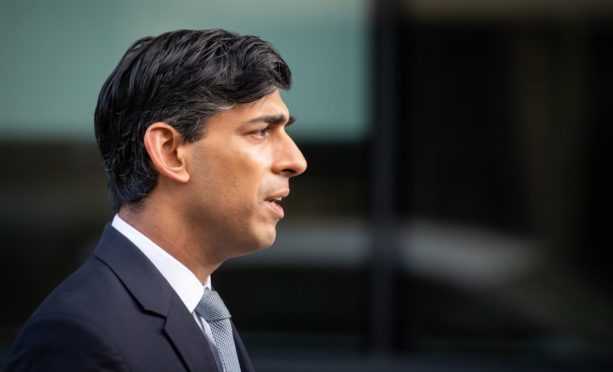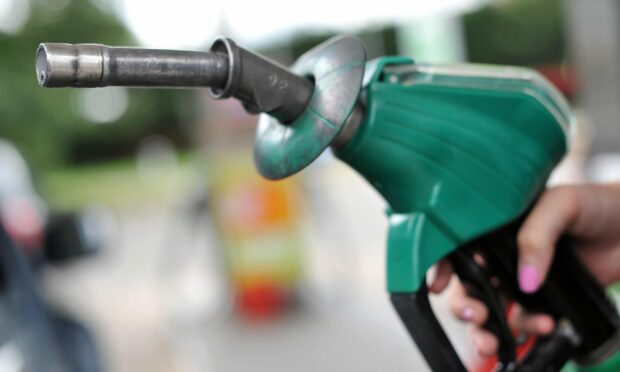Chancellor Rishi Sunak is cutting 5p from fuel duty, scrapping VAT on energy efficiency measures and doubling a household support fund to £1 billion in a response to the cost of living crisis.
Mr Sunak’s spring statement confirmed the plans as fears grow that people all over the UK are being pushed into poverty as prices soar.
The RAC motoring organisation said the duty cut is a “drop in the ocean” which consumers will likely absorb.
The Scottish Government claimed there nothing to reduce energy bills.
The fuel duty cut begins at 6pm on March 23 and will last for a year.
Earlier this week, the average price for a litre of fuel was 167p for petrol and 179p for diesel, demonstrating the scale of the problem.
At the moment fuel duty means motorists pay 57.9p per litre for both petrol and diesel vehicles.
However, research found that slashing the tax by 5p-per-litre would fail to reverse even half the increase in prices over the past fortnight.
He said: “Together with the freeze, it’s a tax cut this year for hard-working families and businesses worth over £5 billion, and it will take effect from 6pm tonight.”
RAC head of policy Nicholas Lyes described the cut as “a drop in the ocean” as it will “only take prices back to where they were just over a week ago”.
He said: “There’s also a very real risk retailers could just absorb some or all of the duty cut themselves by not lowering their prices.
“If this proves to be the case it will be dire for drivers.”
VAT cut
VAT will be reduced from 5% to zero on materials such as solar panels, heat pumps and insulation in a bid to help homeowners install more energy saving materials.
The chancellor made his statement knowing global unrest, war in Ukraine and economic pressure from the pandemic were combining to punish households.
In the Commons, Mr Sunak said the UK must prepare for “the economy and public finances to worsen, potentially significantly” because of the Putin’s war.
Earlier in the morning, official figures revealed UK inflation soared in February to 6.2% as the cost-of-living crisis intensified.
It’s expected to keep growing because of increased costs of housing, food, clothing, energy and transport.
Tax changes
The threshold for paying National Insurance will increase by £3,000 from July.
The basic rate of income tax will be cut from 20p to 19p from 2024.
Paul Johnson, director of the Institute for Fiscal Studies, appeared dismayed by tax decisions.
“Oh for goodness sake,” he wrote on social media.
“What is the possible justification for cutting income tax rate while raising NI rate?
“Drives further wedge between taxation of unearned income and earned income. Yet again benefits pensioners and those living off rents at expense of workers.”
Scottish finance secretary Kate Forbes criticised the chancellor.
“Households and businesses are seeing soaring energy costs right now – that could plunge thousands into fuel poverty,” she warned.
“There was nothing in the spring statement to reduce energy bills today or uprate benefits.”
In Scotland, different income tax charges apply, with 19% already the starter rate north of the border on earnings between £12,570 and £14,732 – rising to 20% for those making between £14,732 and £25,688.
‘Raise benefits’
The SNP had laid down a challenge for the government to raise benefits by 6%.
The party’s Westminster leader, Ian Blackford, said the Scottish Government was raising benefits in its control, such as child welfare.
At Prime Minister’s Questions immediately before the statement, Mr Blackford said: “Family finances are at breaking point, they can’t tighten their budgets any more.
“These families have no room for manoeuvre but the truth is that the Chancellor does. Lower borrowing and increased taxes means that he is sitting with £20 billion to spend today.
“But, instead, this Chancellor is making a political choice, the choice to push people further into hardship by hiking taxes, cutting universal credit, and giving companies free reign to slash workers’ pay through fire and rehire.”

